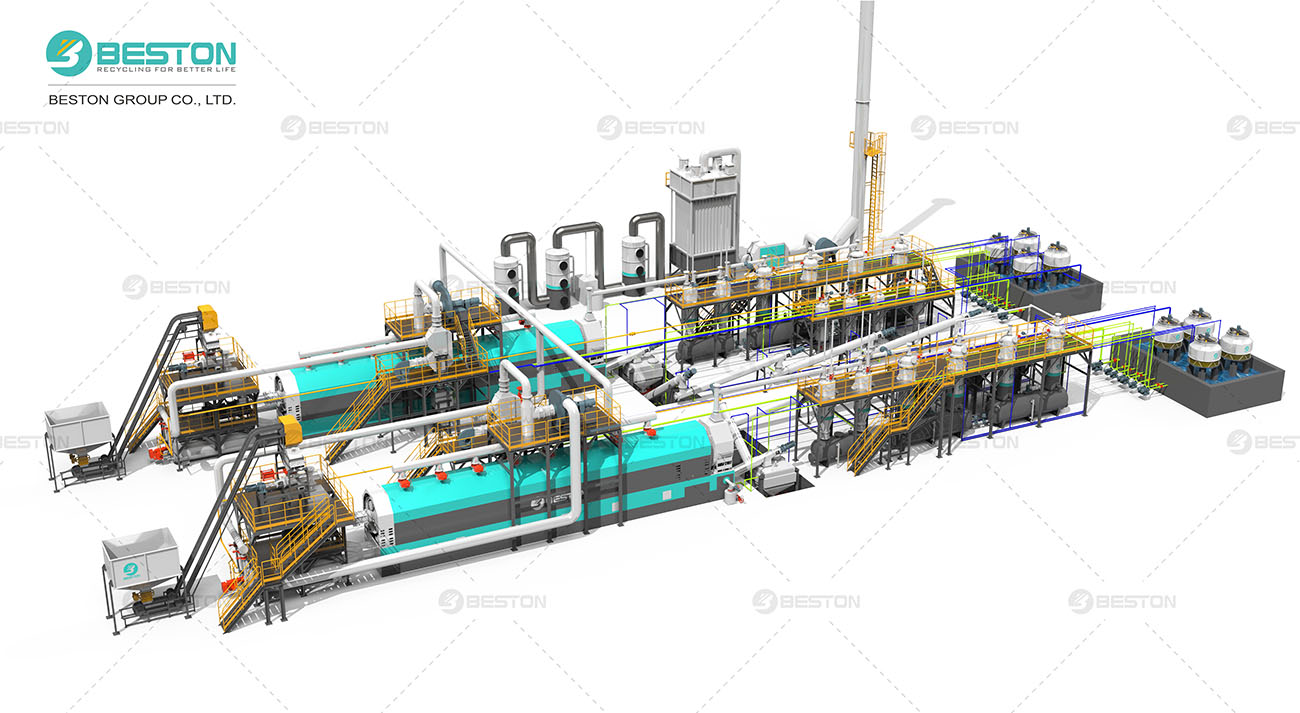Introduction to Pyrolysis Technology
Definition and Process Overview
Pyrolysis involves the thermal decomposition of organic materials in an oxygen-deprived environment. It transforms waste into valuable by-products like fuel, char, and oil, contributing to waste reduction and resource recovery.
Importance in Waste Management
Pyrolysis technology plays a crucial role in waste management by addressing the growing issue of waste accumulation. It not only reduces waste volume but also provides a sustainable means of resource recovery.
Small Pyrolysis Machine: Features and Applications
Operational Capacities and Limitations
A small pyrolysis machine has limited processing capacities suitable for smaller batches of waste. These machines are more compact and cater to small-scale waste processing.
Application in Small-scale Settings
They find utility in settings with limited space and waste generation, such as small businesses or certain rural and remote areas, where larger-scale plants might not be feasible.
Continuous Pyrolysis Plant: Features and Utilization
Continuous Processing Capabilities
Continuous pyrolysis plants are designed for industrial-scale waste management. They feature continuous feeding and output, catering to larger waste volumes.
Industrial-Scale Applications
These plants are suitable for handling municipal waste, large-scale industrial waste, and other extensive waste streams, contributing to high-volume waste management.

Cost Comparison and Efficiency
Initial Investment and Operational Costs
Small pyrolysis machines have lower initial costs compared to continuous plants, making them more accessible to smaller businesses. However, they might have higher operational costs per unit of processed waste.
Efficiency in Waste Processing
Continuous pyrolysis plants offer higher processing efficiency due to their continuous operation, enabling them to manage larger waste volumes more effectively, resulting in a lower cost per unit of waste processed.
Environmental Impact and Sustainability
Emissions Control and Environmental Footprint
Both small machines and continuous plants prioritize emissions control. The continuous pyrolysis plants often have more advanced emission control systems, contributing to reduced environmental impact.
Sustainable Waste Management Solutions
Pyrolysis, regardless of scale, provides a sustainable waste management solution by reducing landfill waste and converting it into valuable resources like fuel, contributing to a more sustainable environment.
Understanding the differences between small pyrolysis machines and continuous pyrolysis plants in terms of capacities, applications, cost-efficiency, and environmental impact is essential in choosing the most suitable waste management solution. Both systems play vital roles in converting waste into useful resources, each catering to specific requirements in waste processing and management.

Comments
No comments yet. Be the first to react!